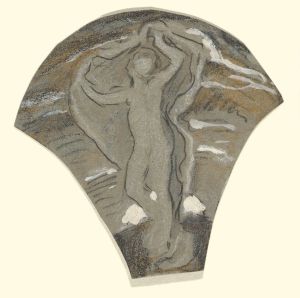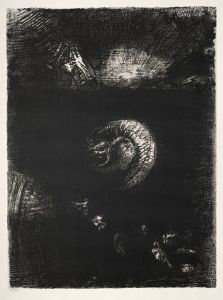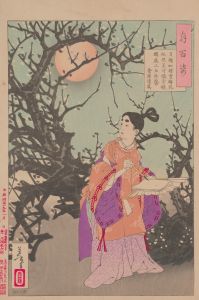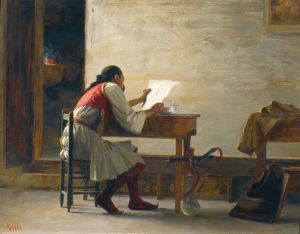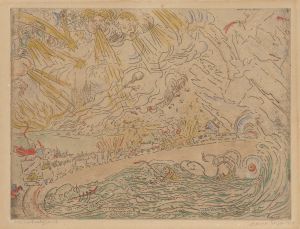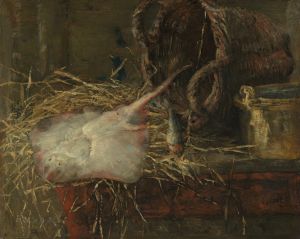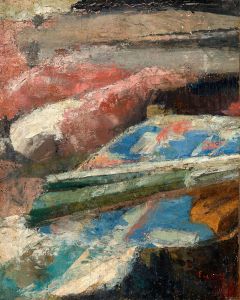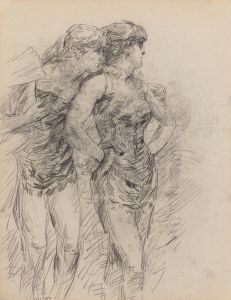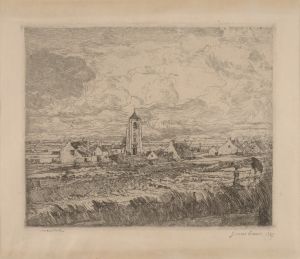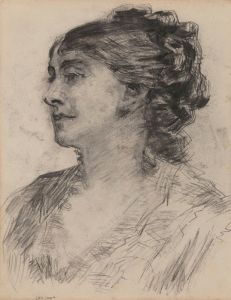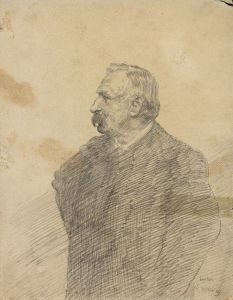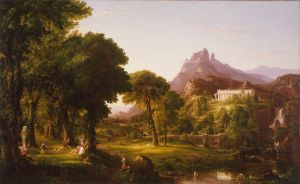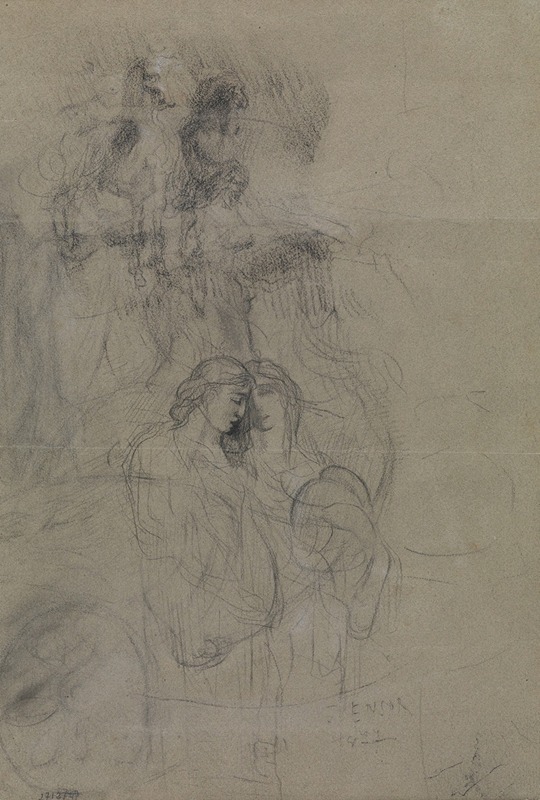
Mythological Scene
A hand-painted replica of James Ensor’s masterpiece Mythological Scene, meticulously crafted by professional artists to capture the true essence of the original. Each piece is created with museum-quality canvas and rare mineral pigments, carefully painted by experienced artists with delicate brushstrokes and rich, layered colors to perfectly recreate the texture of the original artwork. Unlike machine-printed reproductions, this hand-painted version brings the painting to life, infused with the artist’s emotions and skill in every stroke. Whether for personal collection or home decoration, it instantly elevates the artistic atmosphere of any space.
James Ensor's "Mythological Scene" is a notable work by the Belgian painter, who is renowned for his unique and often provocative style. Ensor, born in 1860 in Ostend, Belgium, was a key figure in the development of modern art, and his work is characterized by its bold use of color, innovative techniques, and often satirical subject matter. Although specific details about "Mythological Scene" are limited, it can be contextualized within Ensor's broader body of work and his artistic influences.
Ensor's oeuvre often explores themes of fantasy, the grotesque, and the absurd, frequently incorporating elements of satire and social commentary. His fascination with masks, skeletons, and carnival imagery is evident in many of his paintings, reflecting his interest in the theatrical and the macabre. These elements are likely present in "Mythological Scene," as Ensor often drew upon mythological and fantastical themes to critique contemporary society and explore existential questions.
The artist was associated with the avant-garde group Les XX (The Twenty), which was founded in 1883 and included other progressive artists who sought to challenge the traditional art establishment. Ensor's work, with its vibrant colors and unconventional subjects, was initially met with resistance and criticism. However, over time, he gained recognition as a pioneer of Expressionism and Symbolism, influencing later movements such as Surrealism.
Ensor's technique often involved a vivid palette and loose brushwork, which contributed to the dreamlike and sometimes unsettling quality of his paintings. He was adept at blending reality with fantasy, creating scenes that were both familiar and otherworldly. This approach can be seen in his more famous works, such as "The Entry of Christ into Brussels in 1889," which combines religious iconography with contemporary figures in a chaotic, carnival-like setting.
"Mythological Scene" likely reflects Ensor's interest in combining traditional mythological subjects with his distinctive style. While specific details about the painting's composition and themes are scarce, it is reasonable to assume that it embodies Ensor's characteristic blend of humor, critique, and fantasy. His use of mythological themes often served as a vehicle for exploring deeper philosophical and societal issues, making his work both visually striking and intellectually engaging.
Ensor's legacy is significant, as he paved the way for future generations of artists to explore new forms of expression and challenge conventional norms. His work remains influential, and his paintings are housed in major museums and collections worldwide, including the Royal Museum of Fine Arts in Antwerp and the Getty Museum in Los Angeles.
In summary, while detailed information about "Mythological Scene" is limited, it can be appreciated within the context of James Ensor's broader artistic contributions. His innovative approach to color, form, and subject matter, along with his willingness to confront societal norms, ensures his place as a pivotal figure in the history of modern art.





